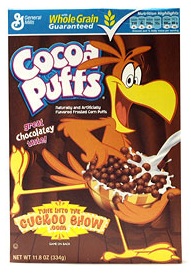Following up on my previous post, I just happened to read this article on Salon.com by Ellen Tarlin. A quote is below. It's not like this is a major surprise, but I will say I did think Cheerios were a healthier option. Oy.
Manufacturers also label foods in tricky ways. They make portion sizes unrealistically small so calorie and nutrient counts appear sufficiently low. A pint of ice cream is supposed to contain four servings of half a cup each. I don't remember the last time I ate just a half-cup of ice cream—probably because there never was one. Food companies also manipulate our perceptions by printing health claims prominently on their packages. When foods are criticized as unhealthy, instead of pulling products, the market alters them, creating "functional foods," which tie an ingredient in the food to the prevention of a certain disease. In some cases, such health claims are irrelevant, because they tout a characteristic a food already naturally possesses (it's meaningless, for example, to say an oil is low-carb, when, in fact, all oils are fats and contain no carbohydrates), or are so qualified as to render them pretty much meaningless, like this one from a box of Cheerios: "Three grams of soluble fiber daily from whole grain oat foods, like Cheerios cereal, in a diet low in saturated fat and cholesterol, may reduce the risk of heart disease. Cheerios cereal provides 1 gram per serving." So if you are already eating a low-fat, low cholesterol diet, eating Cheerios will provide you 1 gram of a substance that might reduce the risk of heart disease. In her book What To Eat, Marion Nestle reveals "The real reason for health claims ... health claims sell food products." Forbes reports that these foods "masquerading as drugs are a booming $31 billion business in the U.S. alone."  Food labels also misdirect. Front and center on a General Mills Cocoa Puffs Cereal box are the words "Whole Grain: Guaranteed," but the ingredients list reveals the whole grain to be "whole grain corn" (corn is one of the most overused foods in our country). The next ingredient is sugar, followed by corn meal and corn syrup, which are two other corn products and one other form of sugar.* (The two main sweeteners are most likely divided this way so the "whole grain" can be listed first since ingredients are listed by weight.) One three-quarter-cup serving of the cereal still contains 10 grams of sugar* and encourages people to eat chocolate (or at least chocolate-flavored foods) for breakfast. Nonetheless, the health claim leads consumers to believe the cereal has health benefits, thus making them feel better about buying it and serving it to their kids or eating it themselves. |

No comments:
Post a Comment